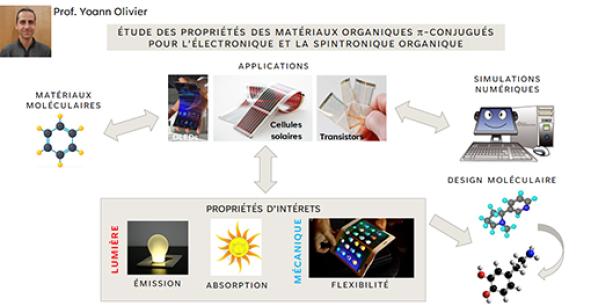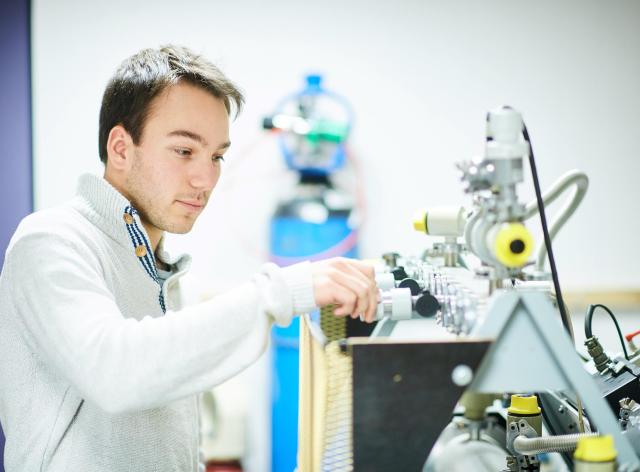Our research focuses on modeling the optoelectronic and mechanical properties of organic semiconductor materials. Understanding these properties allows us to establish a structure-property link and molecular-scale design rules enabling improved performance of these materials.

Organic p-conjugated materials are semiconducting materials. This property enables them to conduct electrons, absorb and emit light. These properties have contributed to the development of another electronics, organic electronics, whose main applications are organic light-emitting diodes (OLEDs), organic solar cells (OSCs) and field-effect transistors (OFETs). These materials are also used in mechanically robust applications paving the way for the era of flexible electronics.
The properties of these materials are not solely described by the properties of isolated molecules, but depend largely on their properties in thin films. In practice, the design of conjugated organic materials with enhanced properties requires an interdisciplinary approach involving the synthesis of molecules and polymers, the characterization of their properties in thin films and the preparation of devices. With the development of high-performance computing centers, computational physics and chemistry have become complementary tools to materials science experiments. Multiscale approaches link molecular and mesoscopic scales by combining the following computational techniques:
- Quantum chemistry (DFT or ab initio) to characterize the electronic properties and conformation of small molecules and conjugated polymers.
- Molecular dynamics to predict the supramolecular organization of materials.
- Kinetic models based on rate equations, minimal electronic structure models to calculate mesoscale optoelectronic properties and stress-strain simulations to obtain mechanical properties.
At LPS, we apply these methodologies to topics associated with organic materials and have developed an interest in the following research themes:
- Charge transport in conjugated polymers. Optimizing charge transport enables OFETs to perform more operations per unit time. [1]
- Study of the optical properties of light-emitting materials exhibiting thermally activated delayed fluorescence (TADF) or doublet emission. These materials are considered the new generation of emitters for OLEDs. [2]
- Studying the mechanical properties of p-conjugated materials. Fundamental understanding of the relationship between the mechanical properties of materials and their supramolecular organization. [3]
Developer (PI): Yoann OLIVIER
Yoann Olivier, a member of the LPS, is also affiliated with the NISM (Research cluster HPC-MM).
Thesis topics
- Optimizing light extraction efficiency within organic light-emitting diodes: Structuring the emitting layer at the molecular scale.
- Modeling the thermally activated delayed fluorescence (TADF) of light-emitting compounds for applications in light-emitting diodes.
- Modeling of mechanical and charge transport properties within conjugated polymers.
- Theoretical study of optoelectronic properties of light emitters for quantum information applications.


